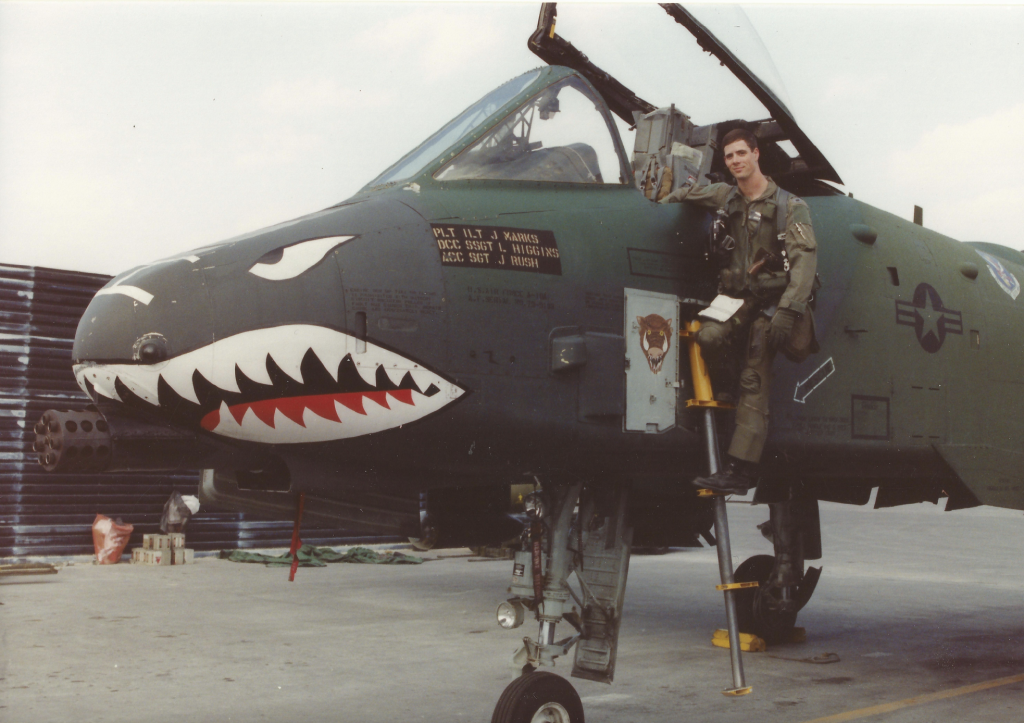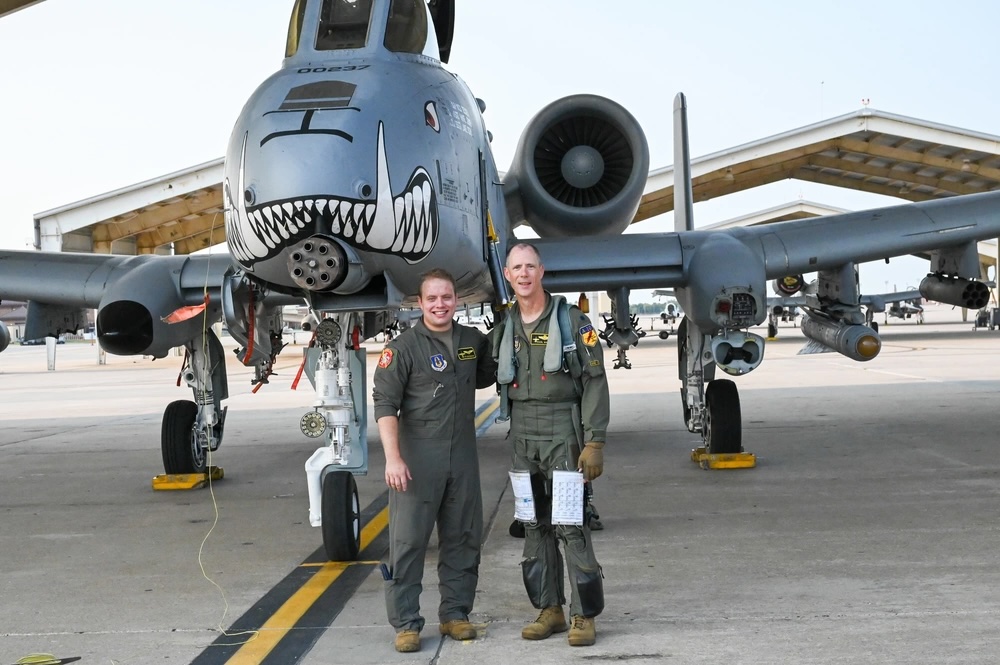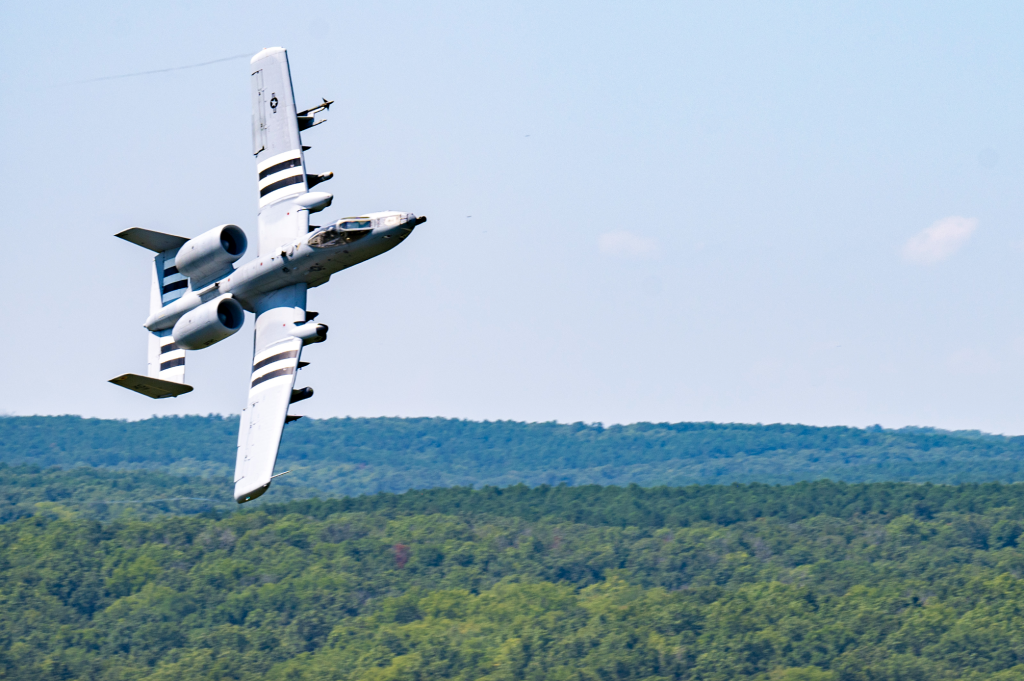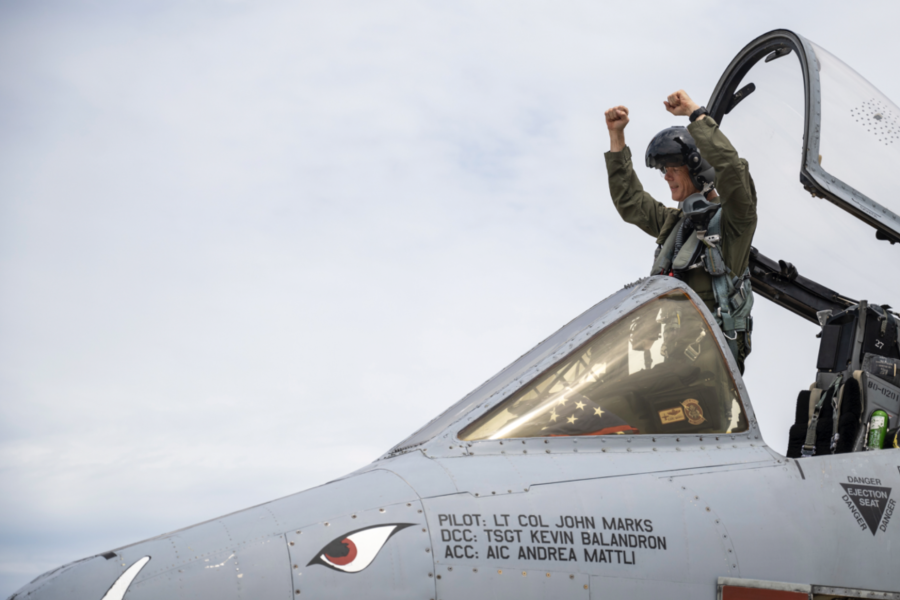An era came to a close late last month when the A-10 pilot with the most flight time ever, Lt. Col. John “Karl” Marks, retired after a 37-year career and 7,500 hours behind the stick of the Thunderbolt II, affectionately known as the Warthog.
A native of Kansas City, Kan., Marks retired at a ceremony at Whiteman Air Force Base, Mo., home to his Air Force Reserve unit, the 442nd Fighter Wing, on Aug. 23, according to a press release.
“I’m glad he’s on our side,” wing commander Col. Mike Leonas said in the release. “I wouldn’t want to fight him.”

Marks first commissioned in 1987 and went on to see combat in the 1991 Gulf War, where he and his flight lead, Capt. Eric “Fish” Salomonson, at the age of 26 and 28, respectively, destroyed 23 Iraqi tanks over the course of three sorties in just one day. The second sortie saw them flying under low, rainy overcast to attack a row of tanks surrounded by anti-aircraft artillery (AAA) at the direction of a Marine forward air controller flying an F/A-18.
“It was very dark and eerie because of the oil smoke, low clouds, and rain,” Marks told author William L. Smallwood in the 1993 book “Warthog.”
“And while we were circling around looking at all the AAA and Fish was asking about threats, the Marine FAC just says ‘Look, are you coming in or not?’” Marks recalled. “Of course, when you say something like that to two Hog drivers, it’s like a slap in the face, so we went in.”
That was just the start of Marks’ career. The rest of it, by the numbers, included:
- 13 deployments (including for the Gulf War)
- 358 combat sorties, including 48 troops-in-contact situations
- 1,161 combat hours, during which he shot 39,340 rounds of 30mm ammunition, dropped nearly 350 bombs, and fired 59 Maverick air-to-ground missiles
- Fired another 141,500 30mm rounds outside of combat for a total of 180,840 30mm rounds
- Received a Distinguished Flying Cross, 18 Air Medals, and 11 Aerial Achievement Medals, “among many other citations and awards,” according to the press release.
Keeping Marks out of a deployment could be a struggle at times. Retired Maj. Gen. Brian Borgen, who presided over the retirement ceremony, remembered being confronted by Marks in a hallway after he was passed over for a 2002 deployment to Afghanistan.
“He’s like ‘WTF? Why am I not going?’” Borgen said, according to the release. “And he was serious. He was angry at me.”
“Marks said he considers it a compliment that Borgen often told him, “‘Karl, we didn’t hire you for your personality,’” according to the release.
Marks’ skill as an A-10 pilot really shined during a 2014 fight over the Kunar Vally in Afghanistan, where he and his wingman supported a group of Afghan and U.S. Special Forces soldiers under attack by the Taliban. Marks had to play three roles simultaneously: pilot, air traffic controller, and joint terminal attack controller, to keep planes from hitting each other and to keep ordnance from hitting friendly forces as F-16s, an AC-130, and Apache and Little Bird helicopters showed up to save the ground troops, who all made it out with just a few noncritical injuries.
“That mission was unique just in the magnitude of the amount of things I had to use that I’d learned over many years of training,” Marks told Task & Purpose in 2021. “My wingman afterwards said he was just trying to hang on, like ‘I don’t know how you did that.’”
Among the audience at the retirement ceremony were a few JTACs who came all the way from Germany, the press release said.
“I’m very proud our biggest cheerleaders are the guys on the ground who say ‘this thing saved my life,’” Marks told Task & Purpose. “That’s the proudest part of flying the airplane.”

‘Tremendous Positive Influence’
When not destroying ground targets, Marks used his decades of experience to mold new generations of Hog pilots. Indeed, nearly a third of his 7,500 hours were spent in the instructor pilot role and 598 in the evaluator role, making sure younger pilots were qualified to go to war, the press release noted.
“Karl has been a tremendous positive influence on the A-10 community,” a fellow A-10 pilot, retired Lt. Col. Gregg Montijo, told Air & Space Forces Magazine. “His experience and wisdom has been passed to generations of A-10 pilots that filtered through the entire community over the years.”
Montijo pointed out that Marks could have pursued the normal Air Force career track of advancing into higher leadership ranks. Instead, he remained close to the operations side to help raise a community of experts in close air support, forward air control, combat search and rescue, and the Warthog’s many other missions.
“I’ve watched him mentor young pilots in the briefing room then teach them in the air,” Col. Jim Macaulay, then commander of the 442nd Operations Group, said in 2016 after Marks eclipsed 6,000 hours. “Every sortie, he brings it strong, which infects our young pilots that seek to emulate him.”
In fact, while preparing for the 2021 flight that would take him through 7,000 hours, Marks insisted on flying with the youngest pilot in the squadron, Lt. Dylan Mackey, whose father, retired Brig. Gen. “Jimmy Mac” Mackey, used to fly A-10s with Marks back in the day.
“Karl has so many tricks up his sleeve that I’m just trying to hang on and absorb everything I can,” the younger Mackey said at the time. “You are always guaranteed to learn something new flying with him.”
As the Air Force looks to retire the A-10, there will likely never be another Warthog pilot as experienced as Marks, but his legacy is here to stay.
“He is living proof that you don’t have to wear stars on your shoulders to have long-lasting positive impacts for our Air Force,” Montijo said.


